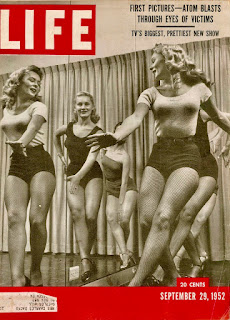The building had been blown out, as well as most of the window frames, by the explosion of the Hiroshima atomic bomb. Immediately the army occupied and used the upper floors of the building first. The lower floors were then immediately used again as a first aid station to evacuate the surviving survivors of the bombing in Hiroshima City to the lower floors for rescue (Life, July 29, 1952, Vol. 33, pp. 19-25, No. 13, Time Publishing Co.) For the first time overseas, Life magazine published 14 atomic bomb photos of Hiroshima and Nagasaki that had not been censored by the US military. The uncensored photos show atomic bombing through victims' eyes, the perspective of a photographer who sees the tragedy of the atomic bombings of Hiroshima and Nagasaki as a threat to the world from the United States, the country that dropped the bombs.
The photographers who photographed the Hiroshima bombing witnessed more tragedies than could be captured in a photograph. In aid stations, they captured the stunned faces of burned children. In the few buildings that remained, we moved cautiously through the dead bodies on each floor of the first aid room. But the sight of the worst of the hibakusha is not well documented in photographs." One photographer explained, "I tried to click the shutter many times, but the victims begged for mercy." It was too cruel, too inhuman, to ignore the hibakusha's pleas for help. If I had known it was an atomic bomb, I wouldn't have thought to take pictures," he said.
The Japanese government estimated, as the photographer saw it, that some 260,000 people were killed, 163,263 injured or missing, an area of about 13.2 km2 destroyed, and 63,431 buildings destroyed. Although this was an enormous amount of damage and sacrifice from the bombing, it was estimated to be a statistically acceptable figure. However, it could hardly be assumed at the time that this was the result of the momentary explosion of the Hiroshima atomic bomb on August 6, 1945, as explained in the book "A-bomb Dai-ichi_Hiroshima no Keisatsu Kiroku" (Asahi Press), a book on the Hiroshima atomic bomb published and released on August 14, 1952. In the book, "Atomic Bomb No. 1: Hiroshima no Keisatsu Kiroku" (Asahi Press), a book on the Hiroshima atomic bombing that was released after the bombing, there is an explanation. A strange light suddenly flashed in the center of the city of Hiroshima. At that moment, the citizens of Hiroshima plunged their fingers in their ears, closed their eyes, and fell to the ground. As if the whole world had been blown to pieces, the huge explosion of the Hiroshima atomic bomb shook the earth and the sky. Its radiant heat was a thousand times that of the sun. Iron poles were twisted like tawashi. From about 10:00 a.m. to 2:00 p.m., the entire city of Hiroshima was engulfed in flames. The poor hibakusha, thirsty and dehydrated, begged for water, but there was none to be had.





